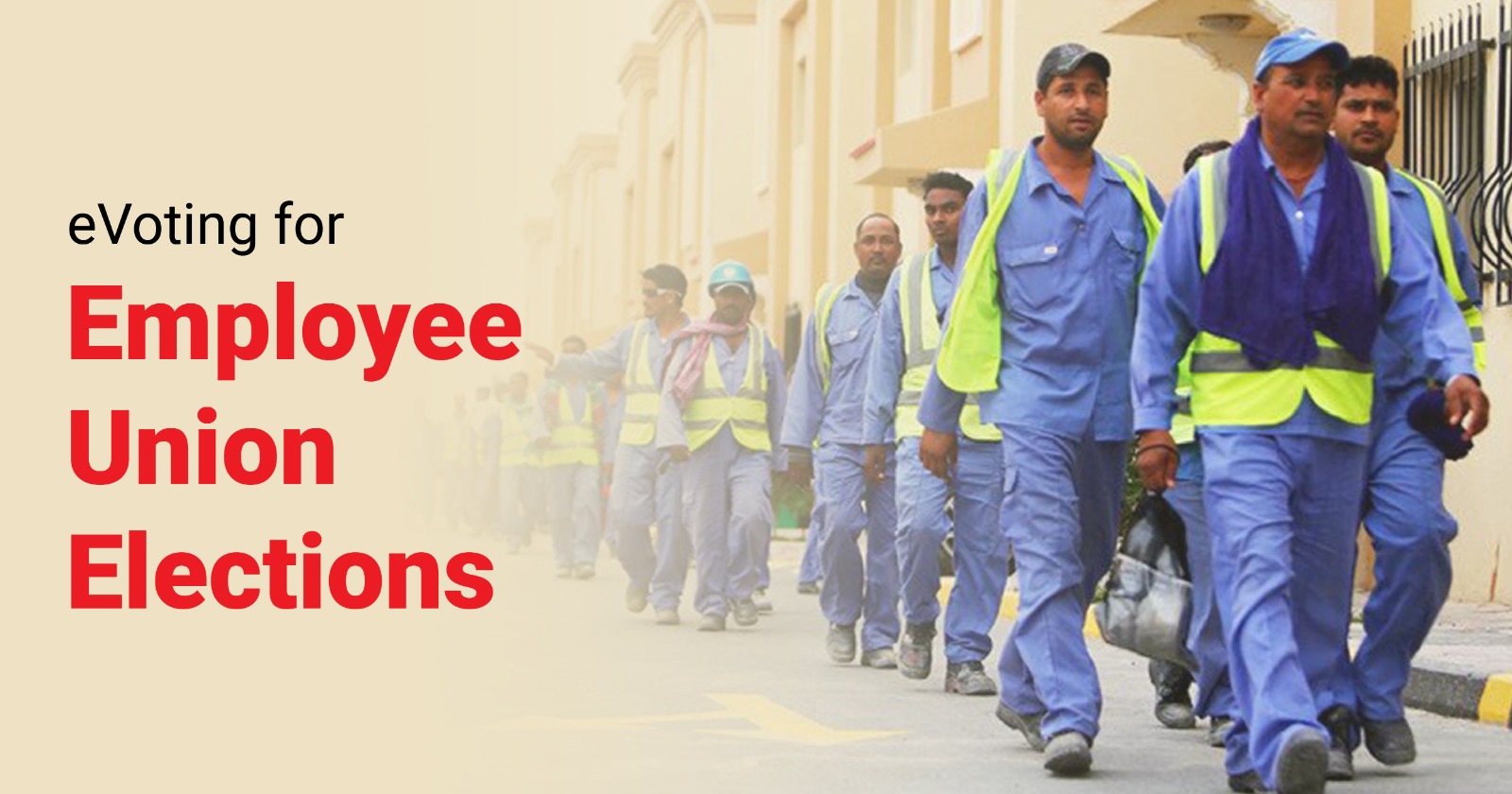One Nation One Election – How eVoting can play an important role in this?

With over one billion people, India is the world’s largest democracy and has a rich history of electoral processes. Over the years, India’s electoral process has evolved from the era of paper ballots to the introduction of Electronic Voting Machines (EVMs). However, as we move into the digital age, it is crucial to explore new possibilities of eVoting for streamlining and enhancing the electoral process. The concept of “One Nation, One Election” has gained prominence in recent years, aiming to synchronize all elections nationwide. In this blog, we will explore the evolution of Indian elections, the advantages of eVoting, and how it can play a pivotal role in making “One Nation, One Election” a reality.
The Evolution of Indian Elections
Indian elections have come a long way from the era of paper ballots, which were time-consuming and prone to errors and malpractices. The adoption of Electronic Voting Machines (EVMs) brought about a significant leap in the accuracy and efficiency of the voting process. However, these machines have faced scrutiny regarding security concerns and limited accessibility for certain groups, including the elderly and differently-abled individuals.
The emergence of eVoting presents a new chapter in India’s electoral history. Leveraging secure digital platforms, eVoting has the potential to address some of the limitations faced by EVMs, offering convenience and accessibility to a broader demographic.
Advantages of eVoting
Accessibility and Convenience: eVoting allows citizens to cast their votes from the comfort of their homes using a computer or smartphone. This convenience is especially beneficial for those needing help physically visiting a polling station due to mobility issues, distance, or other constraints. EVMs, on the other hand, still require physical presence at a designated polling location.
Inclusivity: eVoting systems can be designed to be more inclusive, catering to individuals with disabilities or those who face language barriers. Features like the candidate’s picture on the ballot page, screen readers, multiple language options, and accessibility tools can ensure that a wider range of citizens can participate in the electoral process, addressing a limitation of EVMs.
Reduced Infrastructure Costs: EVMs demand significant resources for production, maintenance, and storage. eVoting systems, once implemented, can potentially mitigate these infrastructure costs by eliminating the need for physical machines, transportation, and storage facilities for EVMs.
Reduced Wait Times: In areas with a high population density, long queues and wait times at polling stations are common during elections. eVoting eliminates the need for physical lines, reducing voter frustration and ensuring a more efficient process.
Improved Accuracy: eVoting systems can incorporate error-checking mechanisms, reducing the likelihood of casting invalid votes. They can guide voters through the process, ensuring that all required fields are completed correctly, which can help minimize errors and improve the overall accuracy of the vote.
Quicker Results: eVoting can expedite the election results. While EVMs have improved the counting speed compared to paper ballots, eVoting can provide near-instantaneous results, enabling faster decision-making and reducing uncertainty.
Security Features: eVoting platforms can incorporate advanced security features, including encryption, multi-factor authentication, and biometric authentication, making it more challenging for malicious actors to tamper with or compromise the voting process. While EVMs are secure, eVoting systems can continuously update and adapt security measures to counter evolving threats.
Voter turnout: Biggest advantage of online voting systems apart from cost, time and effort saving is the voter turnout. Online voting significantly increases voter turnout as it enables voters to vote anytime from anywhere within seconds.
One Nation, One Election: The Role of eVoting
“One Nation, One Election” is a concept that proposes holding all elections in India, including those for the Lok Sabha (Parliament) and state legislative assemblies, simultaneously. It aims to streamline the electoral process by synchronising these elections at the national and state levels. Let’s delve into the possible advantages of eVoting in realising the vision of One Nation, One Election.
Limitations of EVM machines – availability and flexibility: The biggest limitation of the current EVM system when it comes to One Nation One Election is that EVM machines do not have digital screens but mechanical screens. EVM’s are designed to handle only one election at a time. However, a digital screen provides the flexibility of displaying different ballot pages of different elections to the voter based on need. Secondly, in online voting the government need not invest in voting machines which as voters are supposed to use their own mobile / computer for voting. This completely eliminates both the limitations of EVM machines – availability and flexibility.
Manpower requirement for election management and security: In online voting, the voter can vote from anywhere including the comfort of their homes. They need not travel to a booth, stand in a queue and vote. This eliminates the need for a booth. When booths are eliminated it eliminates the need for an army of election management staff and security personnel.
Streamlining the Process: Synchronising national and state elections is a massive logistical undertaking. eVoting simplifies this process by providing a uniform voting method nationwide. This eliminates the need for separate arrangements and procedures for different elections, making the transition to “One Nation, One Election” more feasible.
Cost-Efficiency: Running multiple elections at different levels places a significant financial burden on the government. eVoting can substantially reduce these costs by eliminating the need for booths and EVM machines. Combined cost of holding online elections for all three elections (National, State and local) would be less than one-fourth of the cost of one election with booth-based voting. This cost-saving approach allows for increased funding allocation to critical areas such as education, healthcare, and infrastructure development.
Stability and Effective Governance: Frequent elections can disrupt the functioning of both state and central governments, leading to policy instability. If the Prime Minister is wasting time in campaigning for different state elections when he should be focusing on his job as the Prime Minister, it is not in the interest of the nation. Implementing One Nation, One Election through eVoting ensures a stable governance environment. Elected representatives can focus on development and policy implementation rather than diverting their attention to preparing for or participating in election campaigns.
Reduced Model Code of Conduct Duration: The reduction in the Model Code of Conduct’s duration essentially means that the government has more time and freedom to focus on its governance responsibilities without being bogged down by election-related constraints. Consequently, this can result in improved policy implementation and faster progress in development initiatives.
Enhanced Voter Engagement and Awareness: Conducting one election can boost voter engagement and awareness. With a single online electoral event through eVoting, voters can concentrate on making well-informed decisions for both state and national representatives. This leads to a more engaged electorate and potentially higher voter turnout.
Conclusion:
In the ever-evolving landscape of Indian democracy, eVoting is a promising solution that can help achieve the vision of “One Nation, One Election.” The Right2Vote online platform can significantly contribute to this by offering a secure, efficient, and accessible means for citizens to cast their votes. With its user-friendly interface, robust security measures, and the ability to engage a broader spectrum of the population, Right2Vote can streamline the electoral process, reduce costs, and encourage higher voter participation, ultimately fostering the harmonization of election schedules across the nation.
 Why denying online voting option is equivalent to denying right to vote?
Why denying online voting option is equivalent to denying right to vote?
 If online voting is allowed in Lok Sabha election 2024, what are the benefits?
If online voting is allowed in Lok Sabha election 2024, what are the benefits?
 Online voting is not allowed in Lok Sabha Election 2024 – WHY?
Online voting is not allowed in Lok Sabha Election 2024 – WHY?
 eVoting Website For Employee Union Elections
eVoting Website For Employee Union Elections
